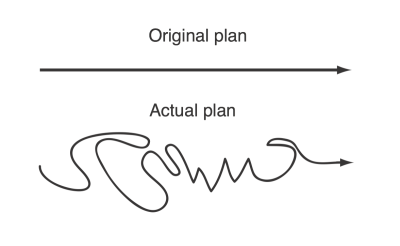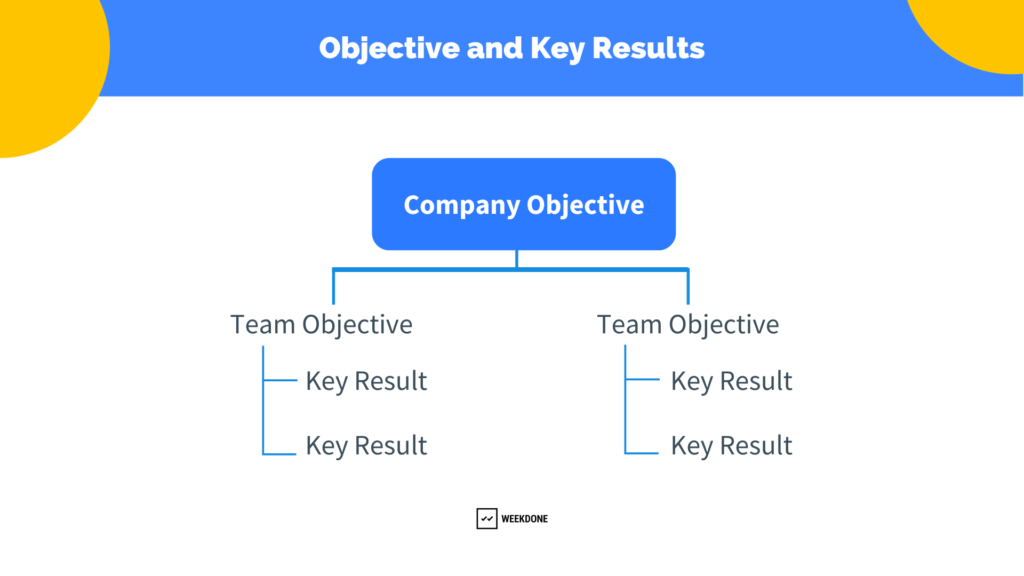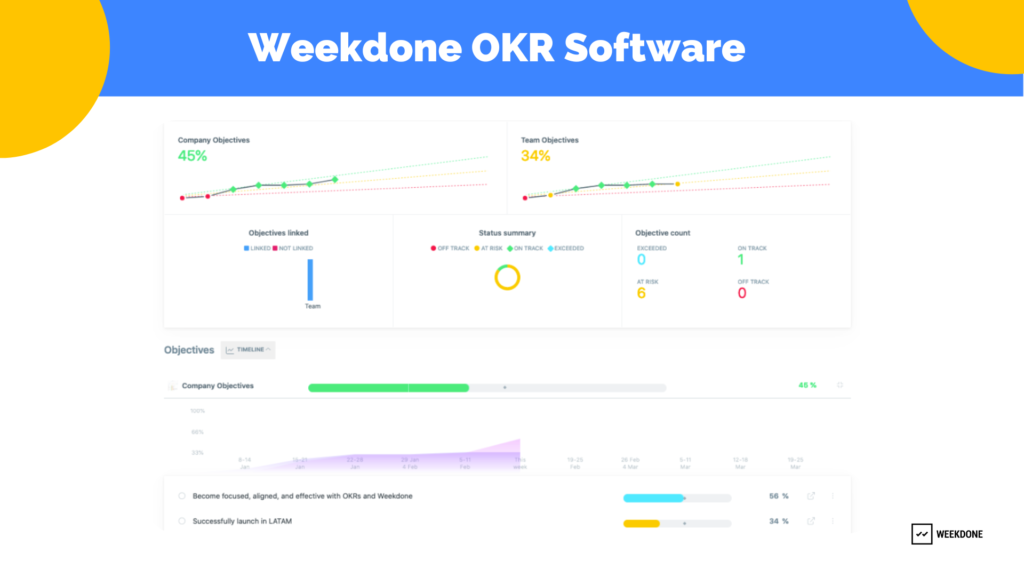Writing goals and Objectives can be a painful and time-consuming process, which makes it especially important to know the best practices already from the start.
How do you decide what are the right business goals for your company? How do you make sure everyone in your team understands your objectives and plans accordingly?
Luckily, there is quite a bit you can do to make goals and objectives quick and efficient.
In this article, you’ll find 6 hand-picked tips on how to write goals and objectives for your business and a business goals template to start right away.
Ready to start? Scroll down!

Tips and tricks for writing goals and Objectives
Here are some tips and tricks I have used over the years. If they help you as well as they have helped me, then I have done my job.
1. Always write down your goals
First things first: always write down your goals and Objectives. This will help you differentiate between goals and pipe dreams. Humans have about 35 thoughts per minute. If goals aren’t put to paper, they are left vague and uncertain. Achieving 10 times more goals means having to write them down.
2. Make sure your goals are measurable
You need to make sure your goals are measurable. For instance “making a profit” doesn’t really work as a goal. “Make $10 in profits from the sale of a product” is more suitable. However, you probably shouldn’t be working with such low numbers unless you’re running a lemonade stand or something.
👉 For examples of measurable results, make sure to check out OKR examples database.
3. Set a deadline
Goals should have a clear deadline. Otherwise, it’s too easy to rely on your future self to address them. Overall, it’s ill-advised to set the deadline too far in the future. Consider using quarterly goals. They give you enough time to get big things done but allow you to keep your aspirational Objectives in mind.
👉 Learn more about quarterly goal planning and how to use OKRs for it.
4. Keep your focus
You can not accomplish everything in one quarter. If you try to, you’ll just end up spreading yourself too thin and getting nothing done at all. It’s better to have fewer goals for your own sanity. In general, 5 goals is better than 7. Aiming for 3-5 really helps you hone in on what’s the most important. You may need to make some tough decisions in order to decide what’s really important, but choosing your priorities actually helps you to achieve your aspirational goals.
5. Do not set goals alone
Goal setting should always be a team effort. It makes sense that if employees are part of the goal-setting process, they are more invested in your goals. Your team members will have a better understanding of what can realistically be done and which Objectives are maybe a little too aspirational (read: impossible).
6. Use Objectives and Key Results
The best way to follow these tips and tricks is to use a goal-setting method that supports it. The answer is Objectives and Key Results (OKRs). OKRs are a popular method for goal setting that focuses on your large, aspirational goals, the measurable results used to gauge those goals and the smaller Plans that guide you week-to-week.
With OKRs, you’ll set quarterly aspirational Objectives. Then, you’ll track your progress towards them with Key Results. As you complete Key Results, the percentage of your progress towards your Objectives increases.
What are goal and objective examples?
Usually, goals are long-term and broad whereas Objectives are more specific and measurable actions that your team must use to achieve the overall goal. Ideally, you’d better write both goals and Objectives.
Writing goal examples might include ‘Strengthen our corporate culture’, ‘Grow our corporate global business’ or ‘Delight our new employees’.
Writing an Objective should be more specific as it defines the area you want to improve to drive the overall goal: ‘Improve the new-hire onboarding process in the Product team to ensure talent retention’ or ‘Create a successful recruitment outreach campaign for Engineering’.
Writing goals and objectives helps to define the main direction of your company along with more specific actionable steps on how to achieve business targets.
See this goal and objective example:
Goal: Delight our new employees
Objective: Improve the new-hire onboarding process in the Product team to ensure talent retention
Key Results:
- Complete 5 sections of the must-have onboarding toolkit
- Interview 7 team members about their own onboarding experience and what they would improve about it
- Achieve an average onboarding satisfaction score of 8/10 points
How to write goals and objectives?
To start with writing goals and Objectives for your company, use this free business goals template where you can:
- define your company vision
- define the business strategy
- define one year focus
- apply OKRs
- use PPP methodology weekly
- define the desired outcome.
If you’re ready to set your goals and Objectives in a dedicated goal-setting tool consider giving a chance to Weekdone.
Weekdone goal-setting software lets you set quarterly goals for your company and teams using the agile goal-setting framework of OKRs. OKR Weekly Check-ins allow your teams to plan your week and connect those plans to achieving your goals.

